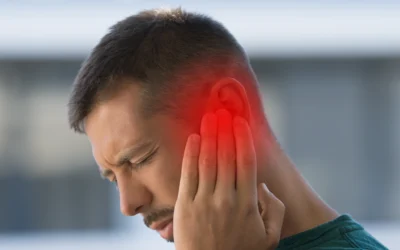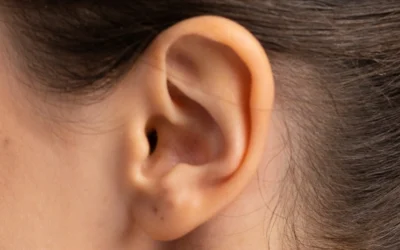Excessive earwax can lead to muffled hearing, discomfort, and even infections if left untreated. Fortunately, microsuction offers a quick, safe, and effective solution. If you’ve never had a microsuction earwax removal procedure before, it’s natural to feel uncertain about what to expect. This article will walk you through the entire process, from preparation to aftercare, so you can arrive at your appointment feeling confident and well-informed.
1. Understanding the Importance of Earwax
Before diving into the details of microsuction, it’s helpful to know why earwax exists in the first place. Medically referred to as cerumen, earwax plays a vital role in protecting your ears from dust, debris, and microorganisms. It also helps lubricate the ear canal, preventing dryness and irritation.
However, when too much earwax accumulates, it can cause problems such as hearing loss, tinnitus, dizziness, and discomfort. Traditional methods like ear syringing or using cotton buds at home can be risky, often pushing the wax further inside the ear. By contrast, microsuction—performed by a trained professional—offers a safer and more precise way to clear blocked ears.
2. Why Microsuction Is Popular
If you’re reading this, you’re likely looking for a professional, effective method to remove earwax build-up. Here’s why many people choose microsuction over other options:
- Minimal Discomfort: Most patients describe microsuction as painless, often comparing the sensation to a gentle vacuum.
- Enhanced Precision: A clinician uses a specialist microscope to view the ear canal in detail, allowing them to target earwax accurately.
- No Water Flushing: Unlike ear syringing, microsuction does not introduce water into the ear. This reduces the risk of infections.
- Immediate Results: Many patients report improved hearing and relief from symptoms straight away.
Microsuction is ideal for people seeking a safe earwax removal method that delivers quick and lasting relief.
3. Preparing for Your First Appointment
3.1 Booking Your Slot
The first step is simply scheduling an appointment. Many professional earwax removal clinics, especially those offering microsuction in major cities like Belfast, allow you to book online. You’ll choose a convenient date and time, often with options to re-schedule if necessary.
3.2 Ear Drops or Oil
In some cases, your clinic may recommend using ear drops or warm olive oil in the days leading up to your appointment. Doing so can soften hardened earwax, making it easier and faster to remove during the procedure. Always follow the clinic’s instructions about how often to apply ear drops and whether both ears need treatment.
3.3 Medical History and Consent
When you arrive, the clinic’s staff will likely ask you to complete a short medical questionnaire. You’ll be asked about:
- Past Ear Problems: Have you had infections, perforated eardrums, or surgery in the past?
- Ongoing Symptoms: Are you experiencing ear pain, dizziness, or tinnitus?
- Allergies: Do you have sensitivities to certain medications or oils?
This step is crucial for your safety. Be honest and thorough, as your answers will help the practitioner decide if microsuction is suitable or whether another approach might be better.
4. The Microsuction Procedure Step-by-Step
4.1 Examination
Once you’re seated comfortably, your clinician will use an otoscope or microscope to inspect your ear canal. This examination helps them determine the amount of wax present and its consistency. If there’s a problem that cannot be solved by wax removal alone—like an ear infection—they may advise you to see your GP before proceeding.
4.2 Positioning and Visualisation
Next, the clinician will position a specialised microscope to get a clear, magnified view of your ear canal. Proper visibility is key to performing microsuction safely and effectively. You’ll be asked to keep still and may be given instructions on how to tilt your head.
4.3 Gentle Suction
Using a sterile, hollow tube connected to a suction device, the clinician will begin removing wax from your ear. Most patients feel only a mild pulling or vacuum-like sensation. There might be some noise—a low humming or slurping sound—but it’s usually well-tolerated. If you experience any discomfort, simply let your practitioner know.
4.4 Checking Progress
The clinician will pause periodically to check how much wax has been cleared. If necessary, they may use a small, sterile instrument to gently dislodge stubborn pieces of wax. Throughout the procedure, they’ll continue to view the ear canal through the microscope to ensure accuracy and minimise any risk of harm.
4.5 Repeat for the Other Ear (If Required)
If both ears are blocked, the clinician will repeat the process on your other ear. The entire appointment generally takes 15 to 30 minutes, depending on the amount and hardness of the wax.
5. Aftercare and Follow-Up
5.1 Post-Procedure Check
Once the wax is removed, the clinician will perform a final inspection to ensure your ear canal is clear. If any inflammation is noted, they might suggest using medicated drops or consulting a GP. Usually, you’ll be given simple aftercare advice, such as:
- Avoiding Cotton Buds: These can aggravate the ear canal and push wax further in.
- Using Ear Drops as Advised: If you’re prone to excessive wax, occasional use of drops can help prevent future blockages.
- Staying Alert to Symptoms: If you notice any pain, discharge, or persistent hearing loss, contact the clinic or your GP.
5.2 Long-Term Ear Health
Microsuction is highly effective, but earwax build-up can recur for some people. Ask your clinician for personalised guidance on how often you may need follow-up appointments. Some patients find once-a-year visits sufficient, while others prefer to schedule more frequent check-ups.
5.3 Additional Services
Many clinics offer related ear care services, from hearing tests to advice on tinnitus management. If you suspect you have a hearing problem beyond earwax, it’s worth discussing further tests or a referral to a specialist.
6. Frequently Asked Questions
- Does it hurt?
Most patients report no pain, just a mild suction sensation or noise. - Is it suitable for everyone?
Microsuction is safe for most people, but those with active ear infections or perforated eardrums may be advised to wait until the issue is resolved. - How do I know if I need microsuction?
Persistent symptoms like blocked ears, muffled hearing, or earache are tell-tale signs. - Can I go back to work after?
Yes. There’s typically no downtime required.
Conclusion
Microsuction stands out as one of the safest and quickest ways to address blocked ears and other earwax-related concerns. Understanding each step—from preparing for your appointment to aftercare—can help you feel more at ease about the process. By choosing professional earwax removal rather than attempting DIY solutions, you’ll minimise risks and likely experience immediate improvements in hearing and comfort.
If you’re in search of a trusted microsuction clinic, be sure to research qualified practitioners who use state-of-the-art equipment and follow strict hygiene protocols. Don’t let excess earwax disrupt your day-to-day life—book your microsuction appointment today and discover just how quickly your hearing can be restored.
Don’t Suffer in Silence: Discover the Life-Changing Benefits of Professional Earwax Removal
Excess earwax might seem like a minor nuisance, but for many people it can become a significant barrier to everyday...
Earwax Myths Debunked: Separating Fact from Fiction
Earwax might be one of the most misunderstood substances in the human body. From cotton buds to ear candling, there’s...
Earwax and Overall Health: Why Maintaining Healthy Ears Matters
Earwax is more than just a waxy substance in your ear—it serves as a first line of defence against dirt, bacteria, and...



